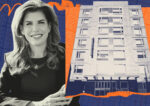Trending
2nd Ave. subway shakes up building sales
Now that the Second Avenue subway appears to be on track, developers and brokers are seeing a mixed impact on building sales and development site deals on the Upper East Side.
MTA Chairman Peter Kalikow promised last month’s groundbreaking at 99th Street and Second Avenue would be different from the previous false starts. But even before elected officials gathered for a photo in the tunnel, news of the impending new subway service has been ruining some long-term deals and encouraging others. Optimists among the buyers and developers say they believe the new line will ultimately increase property values.
The Second Avenue line, which was initially proposed in the 1920s, has had three different groundbreakings since the cement was cracked for the first time in 1972. Back then, Richard Nixon was president, and New York City was spiraling into a financial crisis that halted work on the line. Now, New Yorkers are being told, the Second Avenue line is a reality and the first phase should be up and running by 2013.
The first portion of the new line will have stops on Second Avenue at 96th, 86th and 72nd streets and at 63rd Street and Lexington Avenue, serving as an extension of the Q line. Later construction will stretch the line north to 125th Street and south to Lower Manhattan.
Recent progress reports have caused some headaches for building buyers along Second Avenue on the Upper East Side. The MTA’s ability to use eminent domain — the right of a government to seize private property for public use, in exchange for payment of fair market value — is casting a great deal of uncertainty on some projects. Brian Ezratty of Eastern Consolidated said two of his sales along Second Avenue have gone south because of the impending construction.
“People are in limbo,” he said, speaking to the uncertainty of the MTA’s exact construction plans and how they will affect land and building deals in the area.
Ezratty would not disclose specifics, but said one “large residential transaction” along Second Avenue between the 70s and 80s fell apart because it was not known how much of the site’s retail and garage space would be taken over by the MTA. “It was hard to value what it was worth and what the MTA would pay for the space.”
Paul Massey, a founding partner of Massey Knakal, which has brokered a number of building sales in the area, said that some deals have been negatively affected by the expectation of construction. But, he added, serious developers are also breaking ground in spite of the potential headaches, with a view toward the long-term benefits of the line.
Noting that there’s been a significant uptick in interest from developers, Massey said the fact that the subway is going forward “crystallized in developers’ minds about six months ago.”
Estimating that property values between Lexington and Third avenues are, on average, 10 to 20 percent higher than those east of Third, Massey said that gap is expected to close with the arrival Second Avenue line. That’s sent developers rushing to get into the eastern ends of the Upper East Side, despite potential setbacks due to the MTA’s work in the area.
“It’s one of the top two or three focal points for developers in the city right now,” Massey said.
Citing recent transactions, like residential developer Alchemy Properties’ closed purchase at 77th and Second Avenue a few months ago and a deal for a “major site” at 85th and Second Avenue, which also closed months ago, Massey said that most developers accept the realities of a project like this and take it in stride. He sees a favorable climate as a result. “The only thing we’ve seen is that there’s significant uptick in developers wanting to buy things in that area,” he said.
Lisa Maysonet, a broker with Prudential Douglas Elliman, said she hasn’t noted an effect on sales of apartments in the area. Maysonet added that the realities of the line, which is still at least another six years away, have not set in. “It’s pretty status quo,” she said of movement along Second.
But Peter Hauspurg, also of commercial brokerage Eastern Consolidated, has experienced firsthand the downside of the MTA’s movement along Second. “We had a big building sale — it was about a $155 million contract — that was aborted in the course of due diligence because the buyer found out the subway would come up underneath part of the building. The guy was paying so much for the building already that he couldn’t face the uncertainty of what would be coming up from the ground below.”
Hauspurg said he knows of people who’ve obtained waivers from the MTA guaranteeing that their properties will not be touched through the construction. But as the project progresses, developers and owners will have to look more closely at the havoc it can potentially wreak on their properties.
Still, developers and building buyers aren’t so different from Manhattan residents, and they, too, will put up with numerous inconveniences to live in the city, said Hauspurg. “If you don’t like something, often the next guy’s willing to pay up.”




